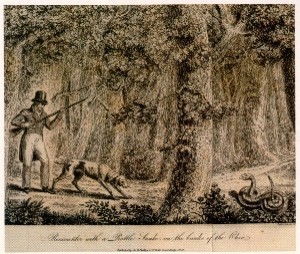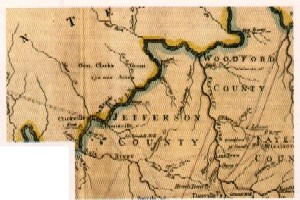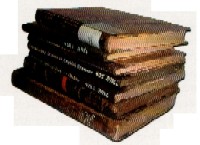Rare Books
By Judith Partington
Head Librarian
About |
In our library, questions concerning the value of rare books and memorabilia rank second in number only to inquiries concerning genealogical matters. While no one on the library staff is qualified to assess the value of rare books, we can give you an idea of what parts of our collection are rare and how we go about adding to these subject areas.
 Overall, the library consists of works of a secondary nature.
Primary works are found in the special collections
department where handwritten documents, such as diaries and
letters, or hand-drawn illustrations, such as maps and
blueprints come under the care of James J. Holmberg, our
curator of special collections. Another division of Special
Collections houses our prints and photographs which are also
considered primary sources.
Overall, the library consists of works of a secondary nature.
Primary works are found in the special collections
department where handwritten documents, such as diaries and
letters, or hand-drawn illustrations, such as maps and
blueprints come under the care of James J. Holmberg, our
curator of special collections. Another division of Special
Collections houses our prints and photographs which are also
considered primary sources.
The library's sources are considered secondary because they left the hand of the author and journeyed to a printing press. Our Library houses all printed materials with the exception of broadsides. These notices were generally for wide public distribution and were printed on one side only so that they could be affixed to the "broad side'' of a building. They usually contained information of interest to everyone in the community, such as where the next horse race would be held or when the local church would be having its bazaar.
So, with the exception of broadsides, all printed materials, including books, maps, sheet music, newspapers, and pamphlets, are a part of the library collection. And, in spite of being secondary sources, a great many of our titles are 170th rare and valuable. From a market standpoint, our most valuable titles may be the 1784 Wilmington, Delaware, edition of John Filson's The Discovery, Settlement, and Present State of Kentucke and an 1814 account of the History of the Expedition Under the Command of Captains Lewis and Clark, to the Sources of the Missouri: Thence across the Rocky Mountains and Down the River Columbia to the Pacific Ocean by Order of the Government of the United States.
 Although we have a great many early histories, the bulk of our rare materials
consists of travelogues, newspapers, pamphlets, and law
books. While the histories cover broad events, the
travelogues tend to focus on individual stories, bringing to
life the incredible hazards of early travel, including
inclement weather, hostile Indians, riverboat accidents,
inedible food, inhospitable innkeepers, and living
conditions so unhealthy you wonder how the authors survived
long enough to find a market for their observations.
Although we have a great many early histories, the bulk of our rare materials
consists of travelogues, newspapers, pamphlets, and law
books. While the histories cover broad events, the
travelogues tend to focus on individual stories, bringing to
life the incredible hazards of early travel, including
inclement weather, hostile Indians, riverboat accidents,
inedible food, inhospitable innkeepers, and living
conditions so unhealthy you wonder how the authors survived
long enough to find a market for their observations.
Fortunately for us they did, leaving behind marvelous descriptions of Kentucky, the land, the rivers, the abundant game, the great salt licks, the burial mounds, and, finally, the settlers 1798. It had to do with the taxes - where they came from, how they placed on vellum and parchment used lived, and why they chose to come in an official capacity, such as here. lf you want an early, intimate naturalization papers, licenses to history of the Ohio River Valley, turn practice medicine and law, land grants, to the travelogues first. To develop a broader social and political understanding, turn next to our law collection.
Law provides a wonderful window into the social and political concerns of the day, and The Filson's law collection covers not only Kentucky's beginning as a fledgling state but our beginnings as a nation as well. One such work is The Acts of Assembly, Now in Force, in the Colony of Virginia with An Exact Table to the Whole.
Published in Williamsburg in 1769, the act: covered originated from a General Assembly in James City (now Jamestown) in 1680, in the reign of King Charles II, the Restoration monarch. Many of the ants are concerned with public welfare - surveying land, cutting roads, building canals, making provisions against insurrection and invasion, creating debtors' prisons and asylums, and quarantining vessels carrying smallpox and other dread diseases.
One of the earliest Kentucky imprints, The Several Acts Relative to the Stamp Duties Passed at the Late and Present Session of Congress, was printed in Washington, Kentucky, in 1798. It had to do with the taxes placed on vellum and parchment used in an official capacity, such as naturalization papers, licenses to practice medicine and law, land grants, etc.
 Along with these three areas, history, travel narratives, and the law our
collection also contains many works on slavery, religion,
and political issues. In the course of a year, we will add approximately twenty rare titles.
Along with these three areas, history, travel narratives, and the law our
collection also contains many works on slavery, religion,
and political issues. In the course of a year, we will add approximately twenty rare titles.
Lately, we purchased the July 11, 1807, issue of the American Mercury, a Hartford, Connecticut, weekly that contains an article on "Shipwrecks at the Rapids of the Ohio." We also purchased a handful of slave narratives, including those of Frederick Douglass and Jermain Wesley Loguen, and a number of religious pamphlets. One of these is a sermon on predestination preached in August of 1826 by Joseph C. Stiles, a Presbyterian evangelist who came to Kentucky in 1835. Another sermon, preached in Kentucky in the 1850s by John Gregg Fee, is "Non-fellowship with Slaveholders the Duty of Christians." Add to these a number of travelogues, biographies, and early maps, and you will have a fair idea of the types of rare materials we collect and preserve here at The Filson library.
The Filson Historical Society
1310 South Third Street - Louisville, KY
40208
Phone: (502) 635-5083 Fax: (502) 635-5086
Hours
The Ferguson Mansion and Office
Monday - Friday: 9 am. - 5 pm.
Saturday and Sunday closed
Library
Monday - Friday: 9 am. - 5 pm.
Saturday: 9 am. - 12 noon
